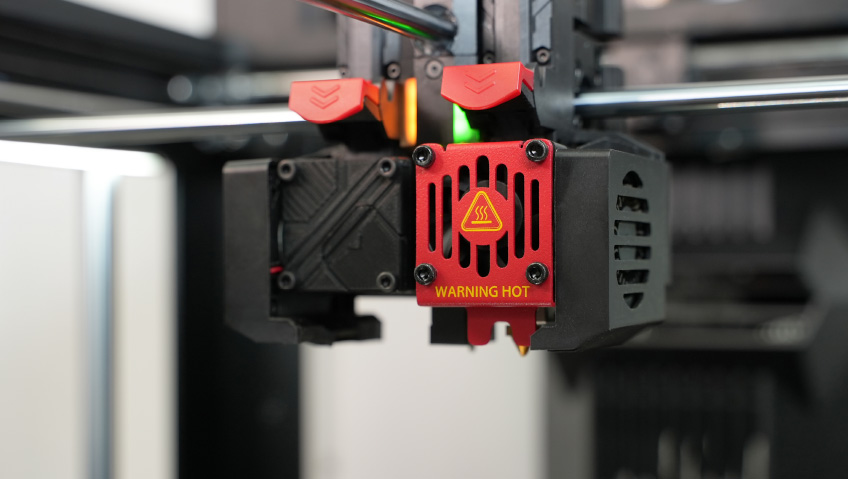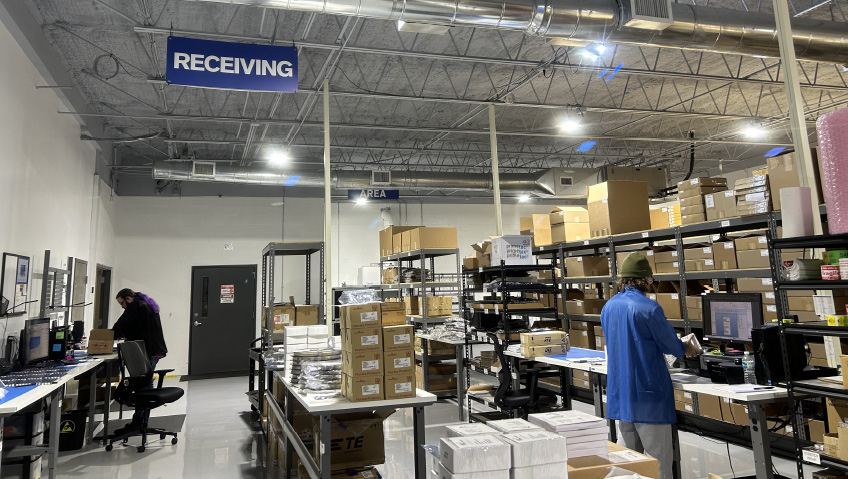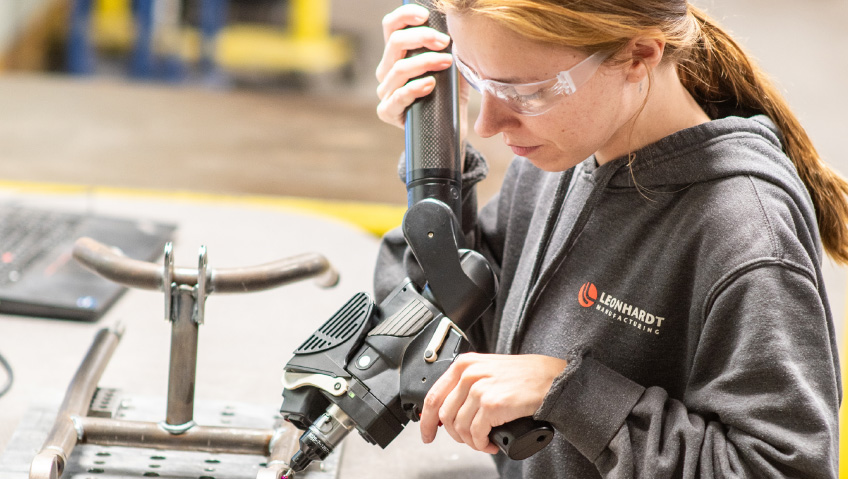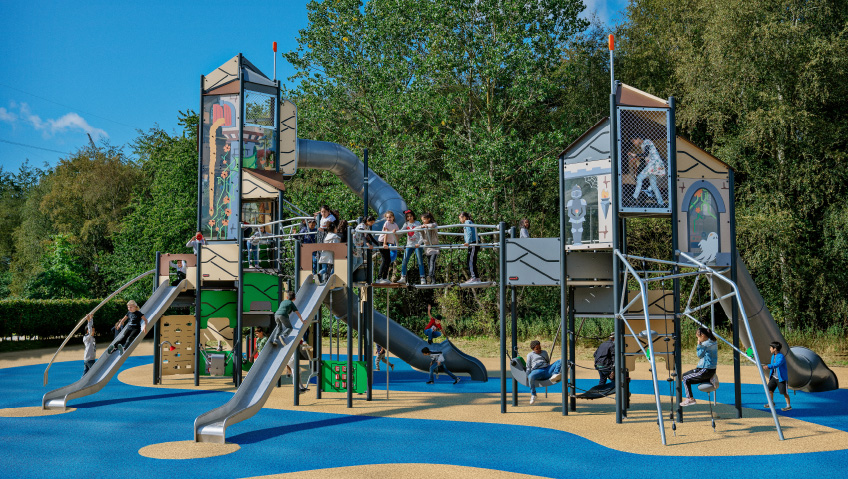Since it was formally established in June of 2015, Raise3D Technologies, Inc. has grown to become one of the world’s leading designers and manufacturers of large-format 3D printers. With its U.S. headquarters in Irvine, California and offices in The Netherlands and China, Raise3D and its innovative team are committed to clients, increasing their competitive advantage through additive manufacturing.
Raise3D was introduced to this up-and-coming market through a Kickstarter campaign, which saw the company’s N Series of 3D printers taking just 41 minutes to reach the funding goal of $50,000. For Raise3D, the campaign’s success also signaled the growing need for “an aggressively priced prosumer 3D printer,” and led to the successful launch of the N1, N2, and N2 Plus 3D printers, according to the company.
Steady growth
In 2016, the company not only won a MAKE award for the N2 Plus as Best Overall 3D Printer but also unveiled ideaMaker, a unique slicing software designed for easy use with 3D printers. The next year, 2017, saw the official launch of Raise3D’s products in Europe and yet another MAKE award, this time for Best Larger Format 3D Printer.
The coming years saw Raise3D maintain its successful growth trajectory and bring more products to the market. After obtaining a round of financing, the company launched its Pro2 Series at the Rapid+ TCT Show in April 2018.
That September, Raise3D won awards for Best Large Format 3D printer and Editor’s Choice from All3DP, and in December, Raise3D officially released its enterprise-level cloud platform, RaiseCloud. More awards followed in 2019, including Best Large-Format 3D Printer from both Make Magazine and All3DP.
That year also saw the launch of the E2 at the TCT in Birmingham. An easy-to-use industrial-grade 3D printer, the durable desktop E2 is focused exclusively on the education sector.
Throughout 2020 to 2022, Raise3D’s success continued, with the company receiving even more awards and releasing more innovative products. On the awards side, Raise3D was recognized for the Best Large Format 3D printer from All3DP and was among the Best 3D Printers of 2020 from TechRadar.
2021 saw the company secure B+ round financing, and the official release of the Pro3 Series, the E2CF, the RMF500, and MetalFuse at TCT Asia. And in February 2022, Raise3D obtained C-round financing, and the market welcomed the release of its Hyper FFF™ Technology in November.
Hyper FFF™ technology
Last year, Raise3D launched Hyper FFF™ and high speed filaments. Designed and engineered for efficiency and performance, these products will bring a marked increase to FFF printing rates, with no loss to the quality of printed parts.
“Raise3D’s high speed filaments are an important part of our Hyper FFF™ technology,” says the company in an interview. “Hyper FFF™ is a flexible solution promoted by Raise3D, where the speed of prints is much greater than conventional FFF 3D printing, and includes comprehensive technological innovations in software, hardware, and filaments.
“Raise3D not only optimizes the corresponding software, improving the control and slicing but also provides a hardware solution based on Pro3 series printers, which allows every printer equipped with the Hyper FFF™ to maintain strong dynamic stability during high-speed printing.”
Along with software and hardware optimization, Raise3D has also released two new high speed filament lines, the Raise3D Hyper Speed and Hyper Core filament lines. “They are designed to comprehensively improve the performance of high-speed printing of both the software and hardware in Hyper Speed Mode,” says Raise3D. “The Hyper Speed line aims to provide cost-efficient and optimized performance filaments for general-use cases.”
Raise3D Hyper Speed filaments—including Hyper Speed PLA and Hyper Speed ABS—are made to withstand higher speeds, yet maintain high quality. When printing at high speeds, filament is rapidly fed into the heat block. Since the polymer has little time to reach a molten state, this can cause nozzle clogging and poor bonding quality between layers. Realizing this, company experts knew there had to be a better way.
By optimizing the molecular weight and tuned flowability, the Raise3D Hyper Speed PLA filament can achieve faster melting in the hot end, and much quicker cooling after the material has been extruded.
“As a result, the surface quality of parts printed using Hyper Speed filaments is smooth and most of the sharp details are maintained,” says the company. “Most importantly, thanks to optimized molecular weight, Hyper Speed PLA shows excellent interlayer bonding quality and Z-direction strength, so it can be used for concept models and figures, prototyping, and so forth.”
Raise3D Hyper Speed ABS can achieve faster melting and cooling during high-speed printing, with a lower temperature gradient and inner stress of the printed part. And with almost no warpage and improved interlayer bonding, Hyper Speed ABS is also perfectly suitable for many functional prototyping parts and tools and fittings, with many different possibilities for post-processing.
“The Hyper Core line aims to provide industry-leading solutions mostly based on composite filaments,” says Raise3D. “It uses an asymmetrical filament structure to optimize the mechanical strength and layer combination strength under Hyper Speed printing and to tackle the nozzle abrasion issue. It’s targeted at tough working conditions with extreme performance requirements.”
Dynamic technologies
Constantly progressing for the benefit of its customers, Raise3D is the innovator behind many other products, including the RMF500. Designed, manufactured, and optimized by the company’s material scientists, the RMF500, an industrial-grade FFF 3D printer, consumes less energy, yet achieves maximum cost-efficiency in terms of material performance versus process cost.
Bringing flexible manufacturing capacity to the production floor, the RMF500 provides a high-volume production process for high-performance composite thermoplastic parts, with reliability and repeatability.
Specialized in printing complex workpieces with a high strength-to-weight ratio in a single print using fiber-reinforced thermoplastics such as PA12CF+, PPA CF and others, it features accurate and repeatable positioning, consistent extrusion flow, a high print speed, and large build volume. “These features enable the RMF500 to deliver large batches or workpieces in a highly efficient manner,” say the people at Raise3D.
Another unique product is MetalFuse. The world’s first second-generation desktop metal solution, MetalFuse was developed jointly by Raise3D and BASF Forward AM with the goal of helping customers achieve simple, fast, and more environment-friendly independent small-batch production of high-quality metal parts. It includes state-of-the-art products such as the desktop metal 3D printer Forge1, the debinding furnace D200-E, the sintering furnace S200-C, exclusive metal slicing software, IdeaMaker Metal, and Ultrafuse® from BASF Forward AM to form a complete solution.
“MetalFuse utilizes the Catalytic Debinding process, which can reduce the processing time by up to 60 percent, and increase the density of a part by up to 97 percent of the density of wrought iron,” according to Raise3D.
“By using BASF Forward AM’s metal filaments, Ultrafuse 316L and Ultrafuse 17-4 PH, MetalFuse is capable of improved printing repeatability and a greater yield rate. MetalFuse has reliable MIM compatibility thanks to BASF’s Catamold technology and its efforts in additive manufacturing. With this solution, MetalFuse’s advantages include low overhead costs and the ability to perform batch production.
“MetalFuse saves more on energy and is more environmentally friendly when compared to conventional processes, such as CNC and SLM (Selective Laser Melting).”
Pro3 series
Along with the RMF500 and MetalFuse, Raise3D is recognized for its Pro3 Series, which comprises the Pro3 (with a build volume of 300 x 300 x 300mm). The Pro3 Plus, with a build volume of 300 x 300 x 605mm, fulfills the requirements of large-scale production and multi-sized rapid prototyping.
Featuring industrial-grade stability and quality and a purposefully versatile design, the Pro3 Series of professional 3D printers is ideal for basic flexible manufacturing, such as prototyping, jigs and fixtures, spare parts, and customized products. “They aim to provide customers both high precision and round-the-clock stable printing to meet the demands of production and rapid prototyping of multiple sizes,” says Raise3D.
With an independent modular extruder and dual extrusion system, the Pro3 Series prints using a variety of filaments with reduced clogging, while allowing for convenient disassembly and replacement of components.
The hot end of the Pro3 Series is easy to remove without tools; it is simple to replace and maintain. And with improvements to its structure, the Pro3 Series boasts a 75 percent increase in the rigidity of the Z-axis rod and the upgraded printing platform, which means better printing results and an easier printing experience.
Today’s Raise3D
Raise3D has come a very long way in just eight years. Growing to almost 400 global employees, the company’s products are available in over 170 countries and territories. With its manufacturing centers in Nantong and Wuhan, China; Asian Office in Shanghai; EU Office in Rotterdam, Netherlands; and U.S. Office in Irvine, California, the company has a new location in Houston, Texas, in the works.
The new office is expected to house a Logistics and Warehousing Center, Sales Department, After-sales Department, Marketing Department, Industrial-grade Machine Showroom, 3D Printing Service Center, and more. These locations—and ongoing innovations—will enable the company to meet the demands of its many customers around the world.
“Raise3D will continue to pioneer flexible manufacturing and push its implementation,” says the company. “Raise3D will focus on adding value via its Ecosystem since the prior purpose we aimed for is to create solutions for industrial manufacturers. This will certainly include high-quality 3D printing hardware, materials, software, services and any other initiatives that can help move productivity and cost-efficiency forward.”






